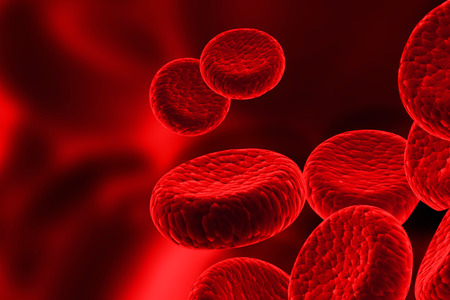Scientists have moved a giant step closer to finding a cure for hemophilia A – A genetic disorder that results in a lack of the functional blood clotting protein, clotting factor VIII (FVIII).
Figures from the U.S. Centers for Disease Control and Prevention suggest that approximately one in 5,000 babies are born with hemophilia A and in the United States there are around 20,000 people afflicted by the condition. Globally around 400,000 patients have been diagnosed with haemophilia A. Hemophilia A is known to be an inherited X-linked recessive genetic disorder, although one third of patients with hemophilia A developed the condition as a result of a spontaneous genetic mutation.
Due to the absence of functional FVIII in the plasma, patients with hemophilia A bleed for longer. They are prone to internal bleeds in muscles and joints and prolonged bleeding from minor cuts to the skin and gums.
The treatment of hemophilia A requires regular injections of concentrated FVIII or recombinant factor products. Mild cases of haemophilia A will require patients to receive exogenous FVIII on demand, such as when they have a cut or wound, while moderate to severe cases require prophylactic administration of intravenous FVIII. Due to the short half-life of FVIII, it must be administered up to three times a week, which has a serious impact on patients’ quality of life. The treatment is also expensive and must be continued throughout life.
Scientists have been hopeful about finding a cure for hemophilia A using gene therapy to correct the genetic defect that causes the condition. Significant advances have been made developing an effective treatment for haemophilia B that have seen significant clinical improvement in patients for up to three years following treatment, although there have been challenges to overcome with the treatment of hemophilia A.
An adeno-associated virus (AAV) vector expressing a human factor IX transgene has been used to treat haemophilia B and raise FIX plasma levels, but the large size and inefficient expression of the human factor VIII coding sequence has made the use of AAV vectors in gene therapy for hemophilia A problematic.
Now there has been a major step forward in the search for a cure for hemophilia A. A team of researchers has reported exciting results from a recent clinical trial that saw one dose of a gene therapy drug allow patients involved in the trial to come off treatment. Those patients all had severe haemophilia A.
In the paper, lead author Savita Rangarajan explained, “We developed AAV5-hFVIII-SQ (valoctocogene roxaparvovec), an AAV serotype 5 vector containing a codon-optimized expression cassette for the SQ variant of B-domain–deleted human factor VIII.”
The dose-escalation study saw six of seven patients who received the highest dose of the treatment return to normal levels of factor VIII over a period of 20 to 24 weeks, while 52 weeks following the treatment the median level of plasma FVIII was still 77 IU per decilitre, with a range of 19 to 164. The seventh patient still responded well, and had FVIII levels between 2 to 32 IU per decilitre; a range typically seen in patients with mild haemophilia.
While this is a major step forward in the search for a cure for haemophilia A, the results should be treated with a certain degree of caution. The gene therapy was only able to be used on patients who were AVV-negative – had not encountered AVV in the past – as they would have AVV antibodies. The patients could also not have active hepatitis. This could greatly reduce the number of patients who could benefit from the treatment.
The results of the clinical trial, detailed in the paper – AAV5–Factor VIII Gene Transfer in Severe Hemophilia A – have recently been published in The New England Journal of Medicine.
